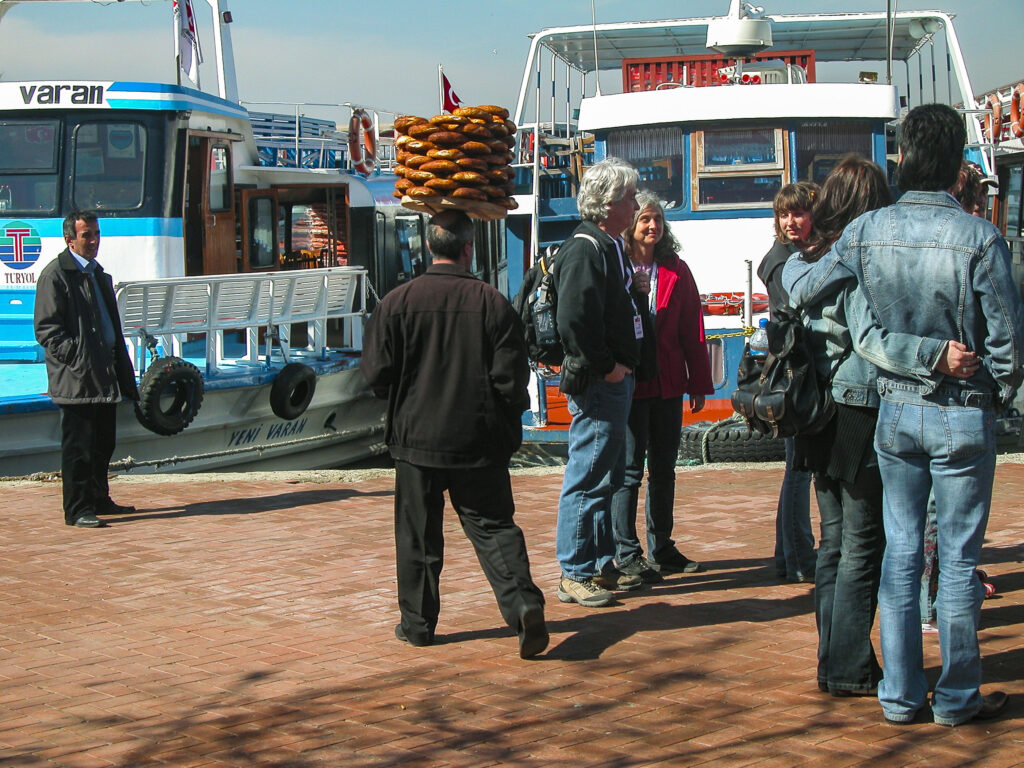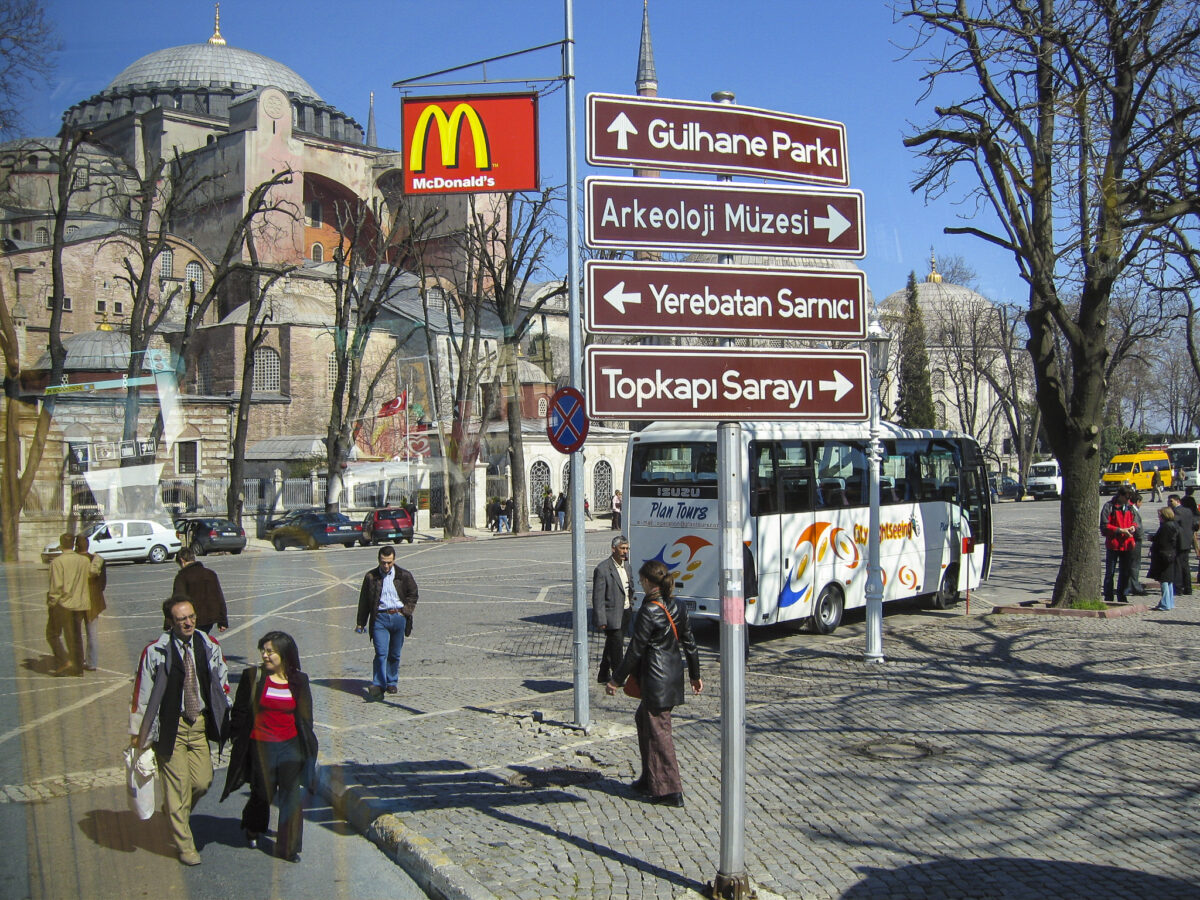This will be a short post, because I wanted to give my viewers a break after wending their way through the labyrinthine recesses of Topkapı Palace, and before embarking on our afternoon odyssey on the blue waters of the Bosphorus.
Immediately upon exiting the Topkapı Palace grounds, we encountered a splendid little structure known as the Fountain of Sultan Ahmed III. It was built during the reign of the Sultan of that name, in 1728, on the site previously occupied by a Byzantine fountain called the Perayton. The Fountain of Sultan Ahmed III is a legacy of the so-called Tulip Period of Ottoman history, which lasted from 1718 to 1730, and was thus known because of the passion for tulip flowers which flourished among the Ottoman elite at that time. It was a relatively peaceful period for the Ottomans. Under the guidance of Grand Vizier Nevşehirli Damat İbrahim Pasha, who also happened to be Sultan Ahmed III’s son-in-law, as well as the trend-setter for the tulip craze, the Ottoman government concentrated on promoting economic growth through developing trade and industry, and also embarked upon an extensive building program. During this period the Ottoman Empire became more open to foreign influences, and traditional Ottoman classical architecture gave way to a hybrid style, incorporating elements of contemporary European Baroque style and especially its offshoot, French Rococo, together with motifs imported from Safavid Persia. The building program of the Tulip Period included some major restorations in Topkapı Palace, such as the Gate of Felicity, as well as new structures such as the Enderun Library with its ornate fountain. But the iconic creation of the period was the Fountain of Sultan Ahmed III, built in front of the Imperial Gate of Topkapı Palace. It drew water from an octagonal pool in the center, with space around the pool for the attendants who maintained it and provided services. There were drinking fountains on each side, each in its own mihrab (niche). At each corner was a triple-grilled structure called a sebil, a kind of sub-kiosk where the attendants handed out water, and also sherbet, in cups to the public.
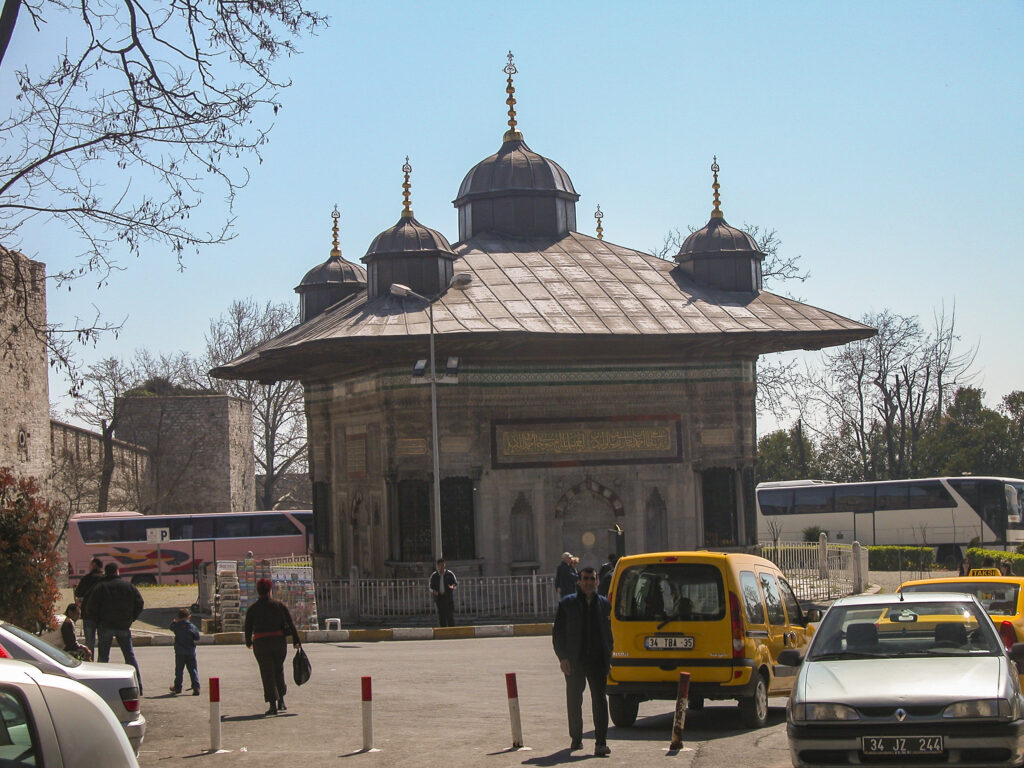
From the Fountain we wended our way, guided by Attila, through a maze of narrow streets toward the Sultanahmet Köftecisi, our luncheon destination. Our route ran between the palace walls and behind Hagia Sofia, through what was clearly a high-rent residential district with spiffy modern condos.
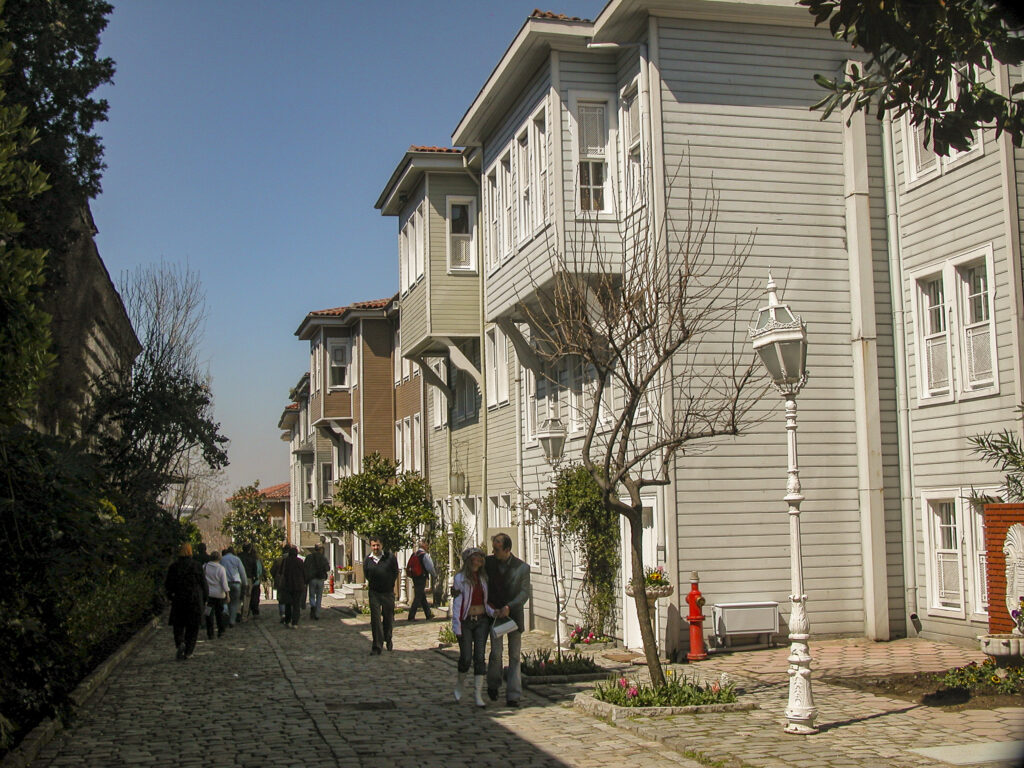
Indeed, some of the spiffy modern structures seemed to be built right into the palace walls, such as the Taverna Sarniç pictured below.
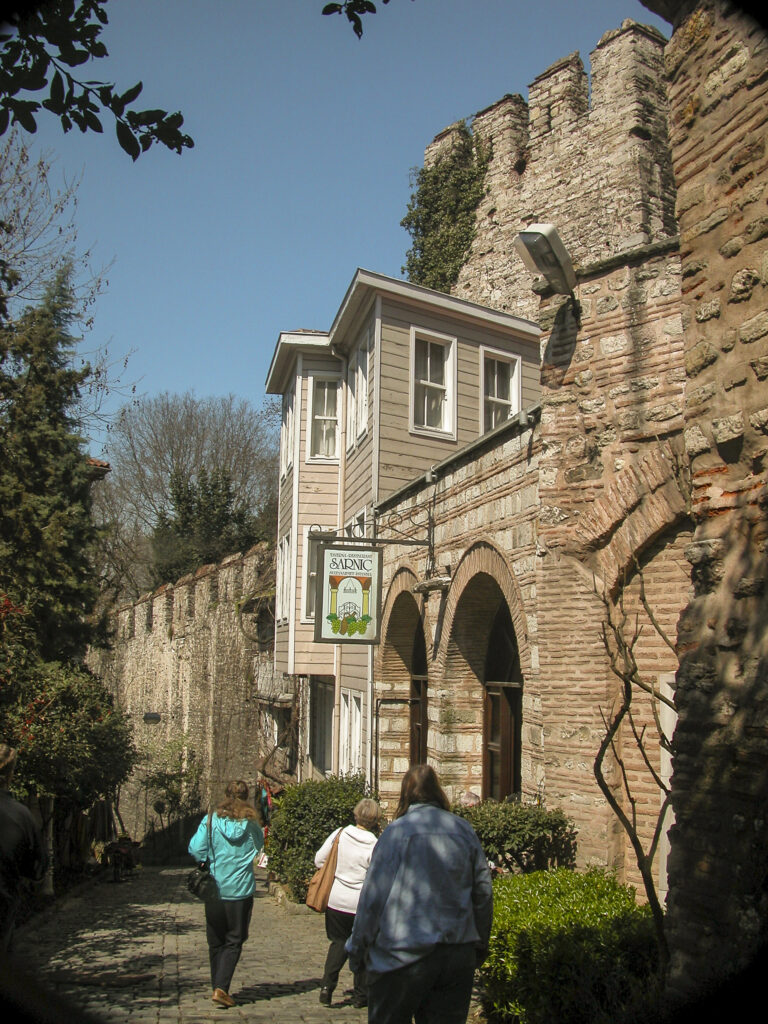
Continuing on our way, we passed by a neighborhood that resembled areas familiar to me from Southern California, especially Temecula and Murrieta, with their tiled roofs and iron fences.
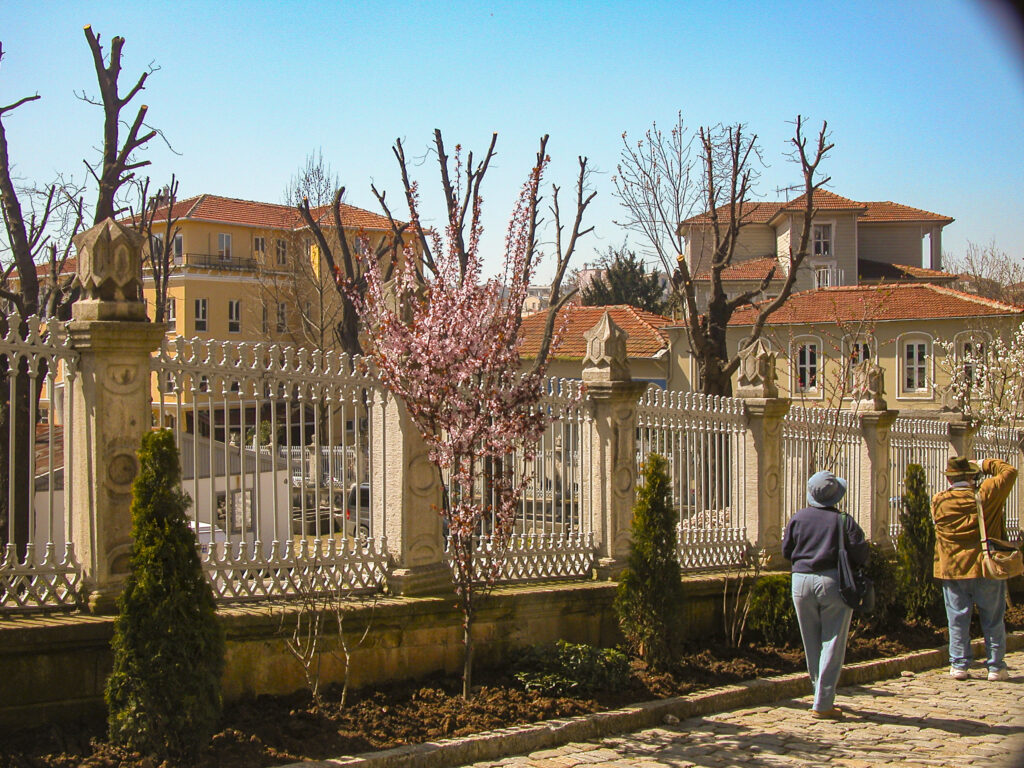
Eventually we emerged onto a street corner near Sultanahmet Square. Turning the corner, one looks back at Hagia Sophia with its minarets, with tombs of the sultans and other structures surrounding it. But the structure at left is all that remains of a 4th century CE triumphal gate which used to house the Stone of Million, a marker of the starting point for measuring distances to all parts of the Byzantine Empire. It was erected to replicate a similar marker, the Milliarium Aureum, or Golden Milestone, in the Forum of Rome. On its base were inscribed the distances of the major cities of the Empire from Constantinople.
Interestingly, until the late 19th century Constantinople was widely accepted as as the locus through which passed the Prime Meridian, the internationally accepted origin of longitude reckoning, and many countries around the world set their clocks based on Constantinople time. However, the International Meridian Conference, held in 1884, decreed that the Zero Meridian should be moved to Greenwich, England, where it has remained ever since. I don’t know how the Ottoman Turks felt about this outcome, but I am fairly certain that it had the support of the British.
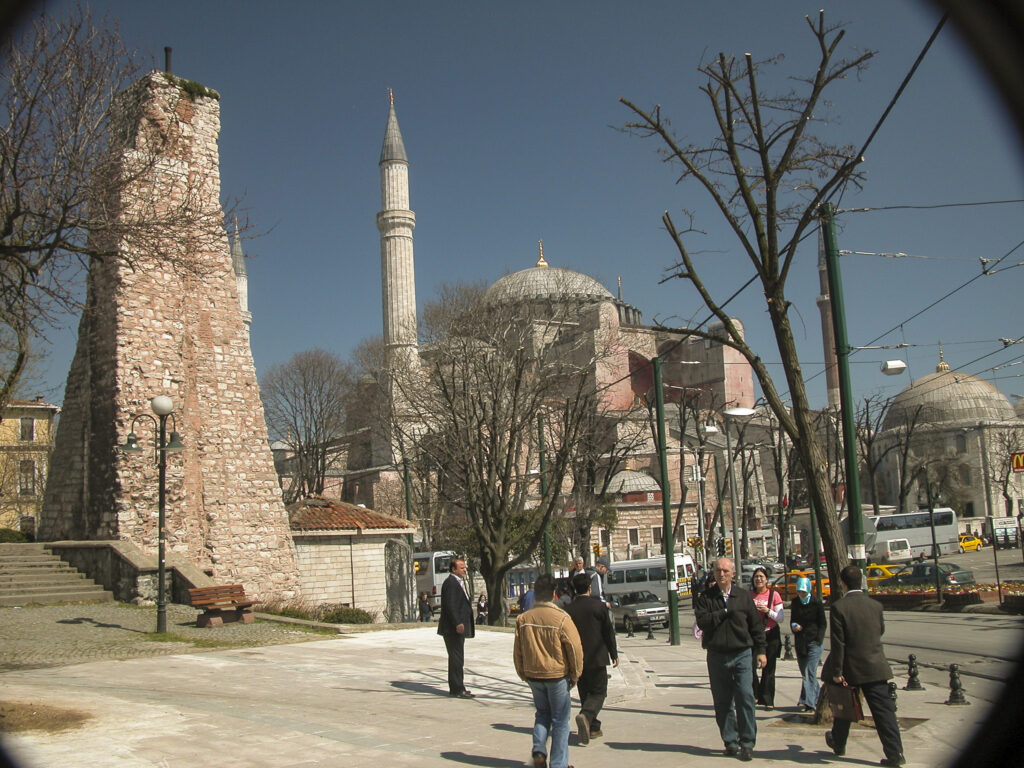
Firuz Ağa
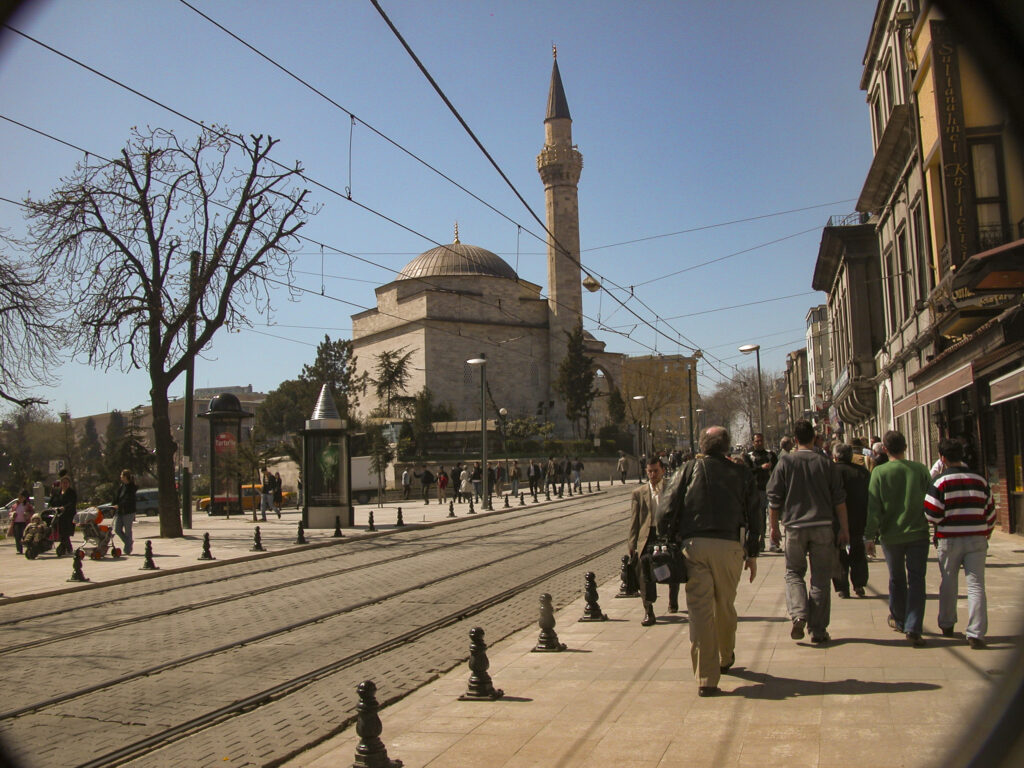
tram
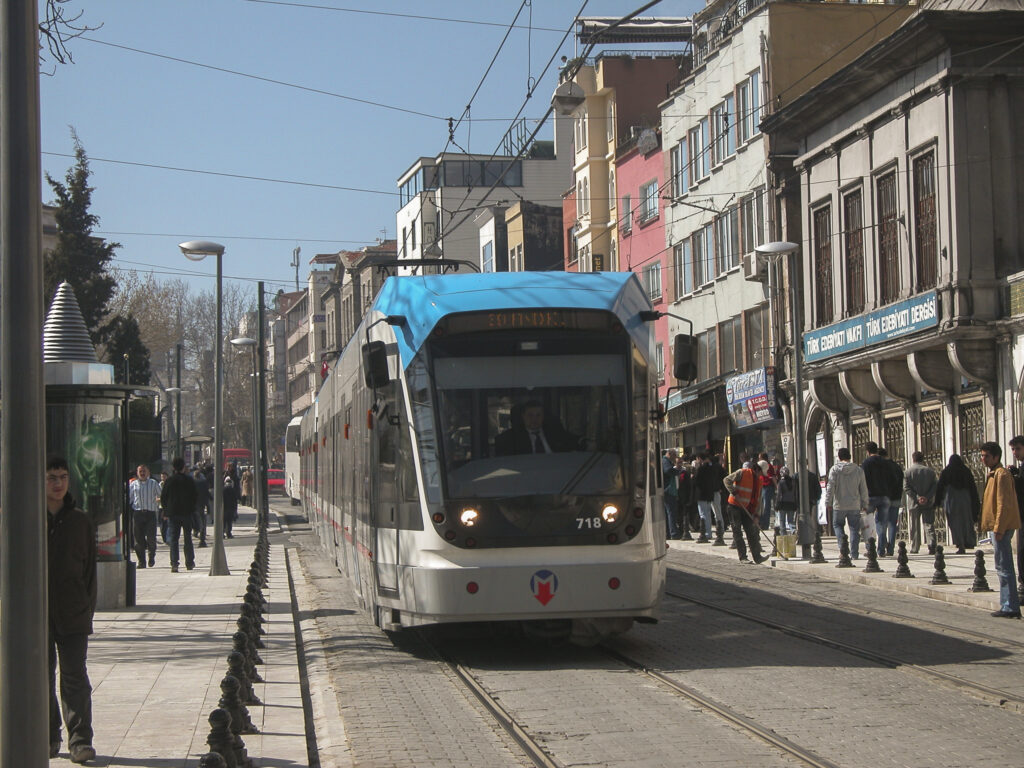
Sultanahmet Köftecisi
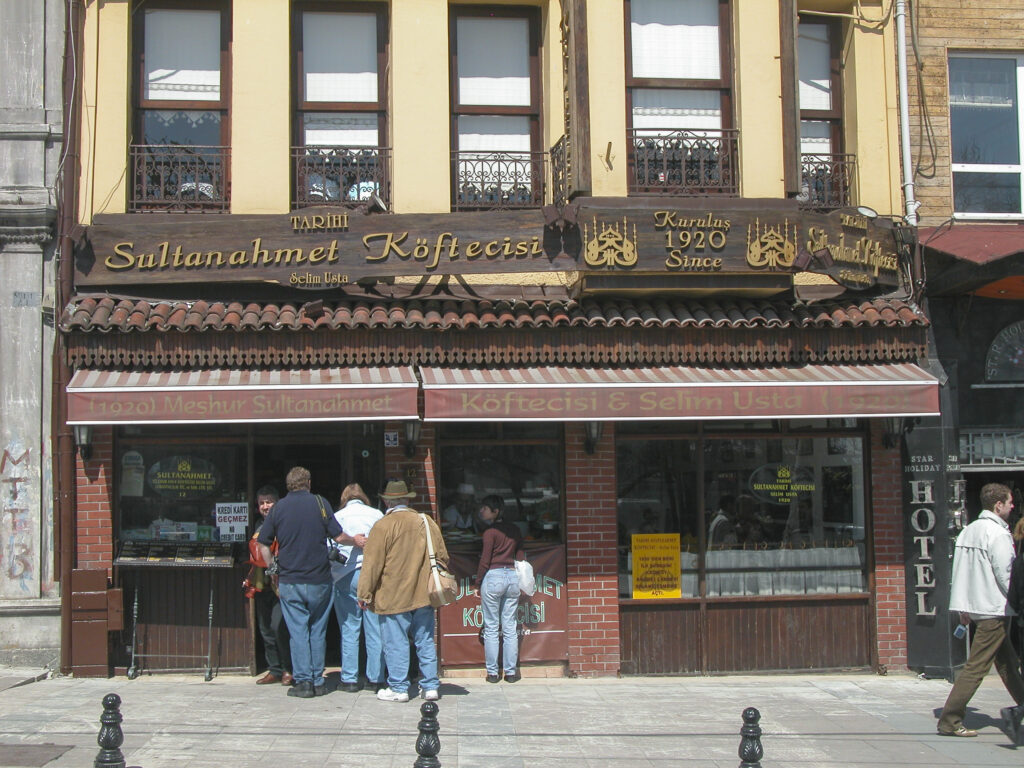
On our way from the Sultanahmet Köftecisi to the quay where our Bosphorus cruise boat awaited us, we passed the Alman Çeşmesi, or German Fountain, erected to commemorate Kaiser Wilhelm II’s second visit to Turkey (1898). The Turks followed the French in calling the Germans Allemands, though they were getting along much better with the Germans than were the French during this period. The late 19th century was a time of diplomatic realignment, when the traditional support of the French and British for the Ottoman Empire – the “sick man” of Europe – against Russia gave way to an entente between the French and the Russians, the traditional nemesis of the Turks. The French, of course, were seeking to buttress themselves against the new German Empire, which had put them to rout in 1870; they took advantage of the increasing alienation of the Russians from their neighbors, the German and Austrian empires, the Alliance of the Three Emperors having broken up in the 1880s. The Turks, having been deserted by their traditional allies, and with nowhere else to turn, began to look to the Germans, who, now feeling surrounded by hostile powers, were only too happy to offer their support to the Sultan.
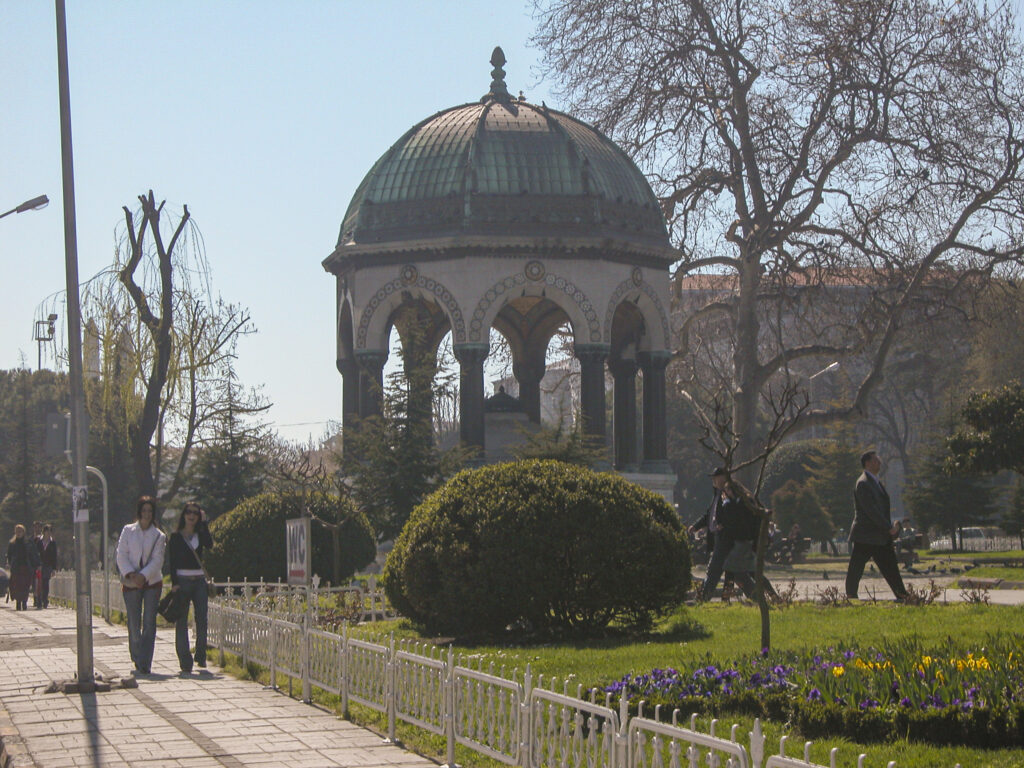
Thus the erection of the Alman Çeşmesi marked the beginning of a growing bond between the Germans and the Ottomans that culminated in the conflagration of World War I and the destruction of both empires.
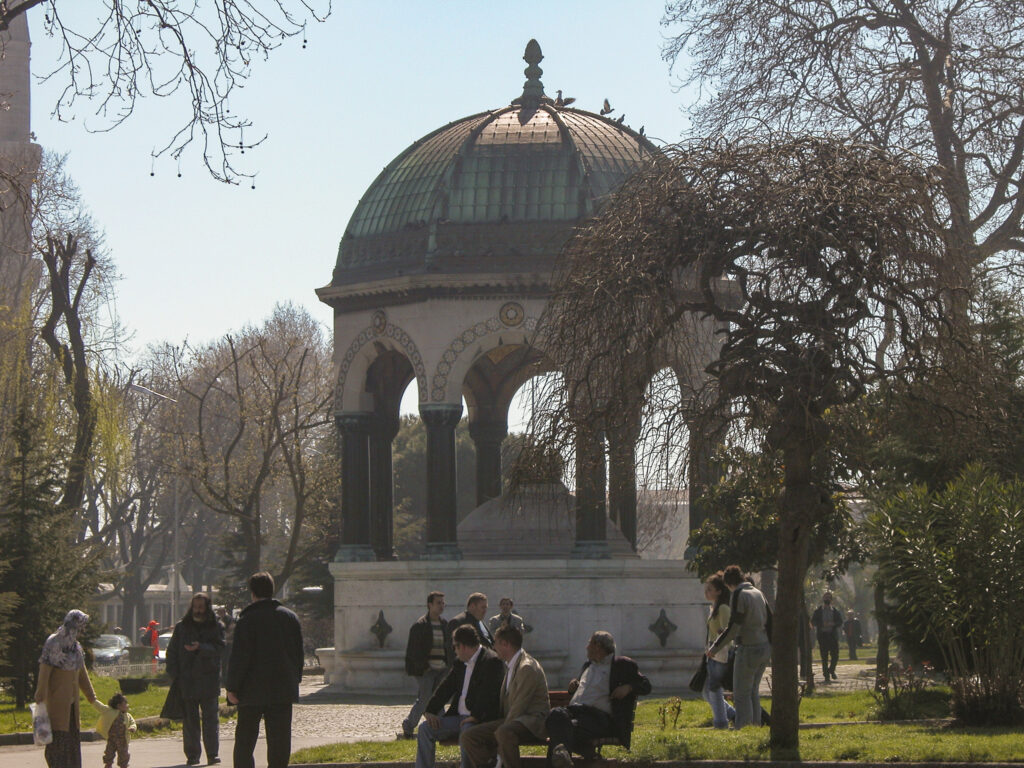
Boarding our tour bus again, we soon arrived at the southern shore of the Golden Horn, near Galata Bridge, where our cruise boat awaited us. While waiting to depart, I snapped a picture of a bread vendor with his wares piled on top of his head in a complex structure resembling Suleiman the Magnificent’s turban. I would have been tempted to sample his wares if I had not been stuffed full of kebabs from the Sultanahmet Köftecisi.
